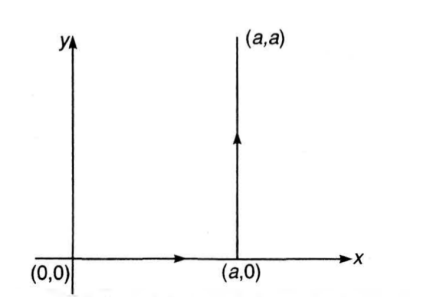Q. A force $ F = - k (y \hat{i}+ x\hat{j}) $(where A: is a positive constant) acts on a particle moving in the $x-y$ plane. Starting from the origin, the particle is taken along the positive x-axis to the point $(a,0)$ and then parallel to the y-axis to the point $(a,a )$. The total work done by the force $F$ on the particle is
IIT JEEIIT JEE 1998Work, Energy and Power
Solution:
